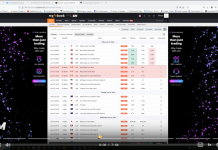 German industrial production rose 2.8% mom in January after minus 2.4% in the previous month. The rebound confirms that German companies have been steering the course despite some volatility. The zigzag pattern at the turn of the year was not driven by a sudden change in fundamentals but by a technicality in the form of a working-day effect triggered by the Christmas holidays. The second consecutive decline in the construction sector was caused by the unusually cold winter weather and should be corrected in February. We stick to our view that the German economy is performing well. As said many times, the combination of a pick-up in global trade and robust domestic demand bodes well for future growth.
German industrial production rose 2.8% mom in January after minus 2.4% in the previous month. The rebound confirms that German companies have been steering the course despite some volatility. The zigzag pattern at the turn of the year was not driven by a sudden change in fundamentals but by a technicality in the form of a working-day effect triggered by the Christmas holidays. The second consecutive decline in the construction sector was caused by the unusually cold winter weather and should be corrected in February. We stick to our view that the German economy is performing well. As said many times, the combination of a pick-up in global trade and robust domestic demand bodes well for future growth.
German industrial production rebounded 2.8% mom in January (UniCredit: +2.0%; Consensus: +2.7%) after plunging an upward revised (but still hefty) minus of 2.4% in the previous month. It was the strongest rise since August 2016 (+3.0%) and the second strongest increase since summer 2011. Manufacturing activity in January was even up 3.7% mom at the start of the new year. Looking at individual sectors, the increase was broad-based, albeit to different extents. The strongest rise was registered in the auto industry (+9.2% mom), followed by electro (+5.6%), metal (+4.9%) and chemicals (+0.5%). In contrast, activity in the construction industry declined for the second consecutive month (-1.3% mom after -2.7% in December).
This morning’s rebound confirms that the German industrial sector has been steering the course despite some monthly volatility. The zigzag pattern at the turn of the year was not driven by a sudden change in fundamentals but by a technicality in the form of a working-day effect. It can only be properly understood when looking at the December 2016 figure first. Given that the Christmas holidays took place over a weekend, many companies shut down their activities in the week afterwards. As a result, the number of “effective” working days were reduced drastically below the levels seen in the last few years in December. Since the standard statistical adjustment for working days cannot take such extraordinary changes properly into account, industrial activity plunged at year- end. The rebound in January corrected for this technicality.
This article comes from FxWatcher service. Try it out for five days straight and get similar commentaries, currency and stock recommendations and market analyses for free! >>>
Apart from the working-day effect, there is little if anything to read into the latest data from a fundamental viewpoint. This is also true for construction activity which declined for the second month in a row. The renewed decrease in January was triggered by the unusually cold winter weather which artificially depressed activity. A strong rebound in February is therefore likely.
Going forward, we stick to our view that the German economy is performing well. As said many times, the combination of a pick-up in global trade and robust domestic demand bodes well for future growth. The next German macro data to be released are the international trade data on Friday. A rebound in exports is likely thanks to the above-mentioned working-day effect. The next round of business sentiment surveys will be published on 24 March (PMIs) and 27 March (Ifo), respectively. It will be interesting to see whether the discussed border adjustment tax in the US will put a (psychological) dampener on German managers’ minds or not.
Dr. Adreas Rees, UniCredit Research

















